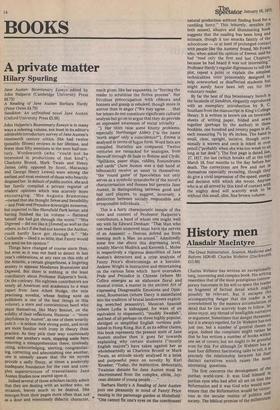j g d f rambling fancy." This leisurely, sensible (in both
senses), allusive and illuminating book suggests that the reading has been long and intimate, though it too smacks faintly of the schoolroom — or at least of prolonged contact with people like the Austens' friend, Mr Fowle .who, when asked his opinion of Emma, said he had "read only the first and last Chapters, because he had heard it was not interesting." Professor Hardy's regular digressions to tell the plot, repeat a point or explain the simplest technicalities were presumably designed to help overworked or disaffected students but might surely have been left out for the voluntary reader. By far the best of this bicentenary bunch is the facsimile of Sand iton, elegantly reproduced with an exemplary introduction by B. C. Southam from the manuscript in King's College library. It is written in brown ink on brownish sheets of writing paper, folded and sewn together (perhaps by the author) in three booklets, one hundred and twenty pages in all each measuring 71/2 by 434 inches. The hand is small, clear, upright, incisive, though occasionally it wavers and once is inked in over pencil ("probably when she was too weak to sit long at her desk"). The first page is dated Jan. 27, 1817, the last (which breaks off at the top) March 18, four months to the day before her death. The corrections are few and not in themselves especially revealing, though they do give a vivid impression of the speed, energy and decision with which she wrote. Anyone who is at all stirred by this kind of contact with the mighty dead will scarcely wish to be without this small, slim, fine brown volume.
natural production without find
Spectator iannu January y o l0, 01 r97 a5 jg d f


























 Previous page
Previous page